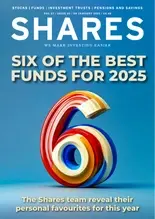
Big tech became a growing source of concern for stock market investors as a week of US earnings drew to a close, with European markets falling at the open on Friday after a discouraging update from e-commerce platform Amazon.
Following sharp share slumps for Alphabet, Microsoft and Meta Platforms earlier in the week, this time it was Amazon’s turn to upset.
Its shares sunk 13% in after-hours trade in New York, as the company reported a decrease in quarterly net income on foreign exchange headwinds, but did note a rise in sales.
Apple fared better after its own quarterly results, the stock rising 0.4% in the after-hours session.
The FTSE 100 index was down 61.43 points, or 0.9%, at 7,012.26 early Friday. The mid-cap FTSE 250 was down 226.95 points, or 1.3%, at 17,854.97, and the AIM All-Share was down 4.58 points, or 0.6%, at 804.88.
The Cboe UK 100 was down 0.8% at 701.18, the Cboe UK 250 down 1.2% at 15,346.29, and the Cboe Small Companies down 0.3% at 12,368.06.
In European equities on Thursday, the CAC 40 in Paris was down 0.8%, while the DAX 40 in Frankfurt was 1.0% lower.
In the US on Thursday, the Dow Jones Industrial Average closed up 0.6%, but the wider S&P 500 closed down 0.6% and the tech-heavy Nasdaq Composite ended 1.6% lower.
European Central Bank President Christine Lagarde sounded tough on inflation on Thursday, but a slight ‘dovish tweak’ to the central bank’s monetary policy statement has sent the euro below dollar parity.
The euro traded at $0.9947 early Friday, down from $0.9984 late Thursday.
The ECB said interest rates would need to be raised ‘further’ - a slight change in language after it previously said rates would need to be hiked over the ‘next several meetings’.
As expected, the Frankfurt-based central bank lifted its key policy rates by 75 basis points on Thursday.
The ECB has now hiked by 200 basis points over the past three meetings. Lagarde told reporters the ECB ‘still has ground to cover’.
‘ECB rate hike pricing took a tumble, with 25bp being priced out over the upcoming six meetings. This means that the expected terminal rate has declined from 2.80% to 2.54%,’ Rabobank commented, explaining: ‘The easiest way of viewing this is the market now thinks it more likely than not that there will no hike at the March meeting where previously it thought it more likely than not that there would be a 25bp hike.’
Turning to Japan’s central bank, the Bank of Japan stuck to its ultra-loose monetary policies on Friday, even as the yen comes under pressure from aggressive tightening by the US Federal Reserve and other central banks.
The stark contrast between Japanese and US monetary policy has caused the yen to plummet to 32-year lows against the dollar, prompting the government to intervene to prop up the currency.
The dollar was quoted at JP¥146.91 early Friday in London, up from JP¥145.90 late Thursday. The Japanese Nikkei 225 index gave back 0.9% on Friday.
In London, NatWest was at the bottom of the FTSE 100, losing 7.2%.
The bank reported strong income growth in the third quarter, boosted by both increased lending and higher interest rates, but it warned it is keeping a close on eye on any change in behaviour from its customers.
In the three months to September 30, operating profit before tax rose to £1.09 billion from £976 million a year before.
Putting a cap on the bank’s profit, NatWest set aside £247 million in the quarter to cover an expected increase in bad loans, which is reversed from a £221 million gain the year prior.
‘At a time of increased economic uncertainty, we are acutely aware of the challenges that people, families and businesses are facing up and down the country. Although we are not yet seeing signs of heightened financial distress, we are very conscious of the growing concerns of our customers, and we are closely monitoring any changes to their finances or behaviours,’ Chief Executive Alison Rose said.
Peers Barclays and Lloyds were down 2.8% and 2.3%, respectively.
British Airways-parent International Consolidated Airlines lost 1.4%, despite posting a positive quarter.
IAG swung to profit in the third quarter, as revenue improved on pre-pandemic levels, despite lower capacity. It swung to a pretax profit of €1.01 billion from a loss of €714 million a year before. Revenue nearly tripled year-on-year to €7.32 billion, from €2.71 billion.
Passenger revenue saw the strongest recovery, growing to €6.42 billion from €2.00 billion. Compared to pre-pandemic 2019 levels, it was 22% higher.
Davy Research said IAG’s third-quarter operating profit of €1.21 billion was above market consensus of €814 million and its own estimate of €826 million.
Glencore fell 3.3%.
The miner saw a drop in production in the first nine months of 2022 across most of its metals, with the exception of strong growth from cobalt and nickel, forcing the miner to lower its annual guidance.
In the nine months to September 30, copper production was down 14% year-on-year to 770,500 tonnes, while gold was down 15% to 504,000 ounces.
Chief Executive Gary Nagle said: ‘Operational performance over the third quarter was impacted by a range of events including extreme weather in Australia, industrial action at nickel assets in Canada and Norway - since resolved - and the emergence of significant supply chain issues in Kazakhstan stemming from the Russia-Ukraine war. Full-year 2022 production guidance has, accordingly, been reduced for those affected commodities.’
Glencore said its commodities trading Marketing arm will make a significantly reduced by still above-average contribution in the second half.
Peers Anglo American, Rio Tinto and Anto were down 3.2%, 2.9% and 2.1%, respectively.
Elsewhere in Asia, the Shanghai Composite lost 2.3% and the Hang Seng index in Hong Kong was 4.1% lower in late trade.
The S&P/ASX 200 stock index in Sydney closed down 0.9%.
Sterling was quoted at $1.1517 early Friday, down from $1.1573 at the London equities close on Thursday.
Gold was priced at $1,653.10 an ounce early Friday, lower from $1,662.60 on Thursday evening in London. Brent oil was trading at $93.82 a barrel, down from $94.75 late Thursday.
The economic calendar has a GDP and CPI reading from Germany at 0900 BST and 1200 BST, respectively, before the personal consumption expenditures inflationary gauge from the US at 1330 BST. Core PCE is the Fed’s preferred inflationary measure.
Copyright 2022 Alliance News Limited. All Rights Reserved.





